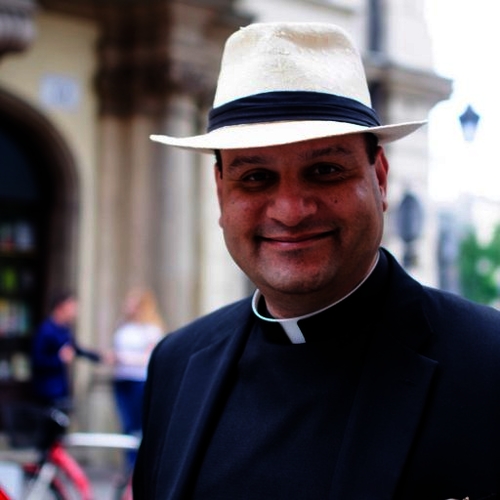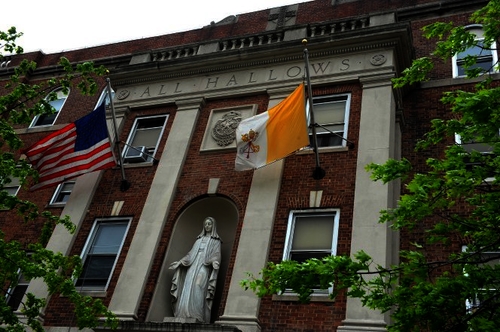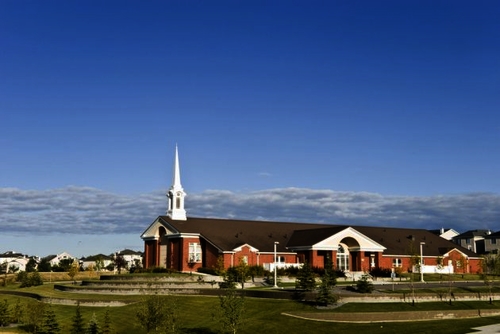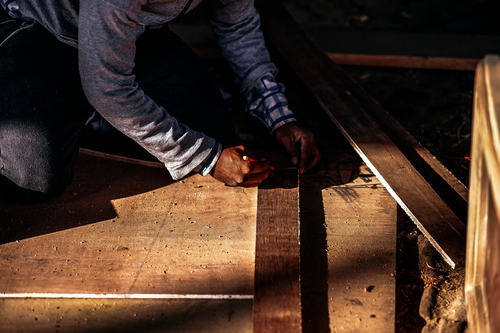In a CCTV interview, Director of the Barbara Mitchell Centre for Improvement in Education at the Fraser Institute and Cardus Senior Fellow Deani A. Neven Van Pelt explained some of the economic advantages of homeschooling. In her comments, she referred to the Cardus Education Survey: "Although, for example, home school graduates weren't quite as likely to attend university following their grade 12 homeschooling experience, if they did attend university, they were more likely than any other sector to go on and get a PhD. So it seems like someone who is homeschooled ends up being 'all in.'" Find out more about the Cardus Education Survey at carduseducationsurvey.com. Watch the full interview:

Budget 2015
April 21, 2015

Fraser Institute’s Deani Van Pelt references Cardus research
February 26, 2015

Time for mature conversation about the end of life
Choice now trumps life as Canada’s political preference of, well, choice. For the first 149 years of our existence, life had dignity and deserved the fullest protection of the law. By this time next year, Parliament must codify the principle that the choice to take one’s life is a greater good than life itself. Politics still has work to do in defining how broadly or narrowly the terms of that choice will be. Still, the Supreme Court has spoken and a fundamental shift is the inevitable outcome. Given that 2015 is an election year, any solution will be presented as a compromising middle ground, although it’s hard to imagine there won’t be alienation on either side of the unbridgeable divide between the choice for life and the choice for death. The paradox is that death is the commonality we all share. While we argue over the timing and manner of its inevitable arrival, days and months and years are being squandered in preparing for, and ultimately accepting, the finitude of life on earth. Statistics show only five per cent of Canadians have had an end-of-life conversation with their doctor. Maybe that’s, at least in part, why 70 per cent of seniors don’t wish to have life-preserving treatments, yet 54 per cent will be admitted to an intensive care unit at some point. It may also be key to the Canadian Medical Associations reminders that only 16 per cent of Canadians have access to best-practice medical care. Palliative care is often the tug-of-love orphan in the life-versus-choice argument. Both sides claim to want more of it. Both use its recognized benefits to pursue very different rhetorical outcomes. Could a source of the discrepancy be the very hyper-medicalized approach to dealing with end of life issues? I’m starting to think so. I’m becoming increasingly convinced that in addition to palliative care, the gamut of enmeshed family, community and spiritual supports necessary for best-practice end of life care are being ignored to the detriment of all Canadians. It’s not an abstract or philosophical concern. Death not only claims us all, it touches those we love and know in a wide circle around us. That, surely, should make it a fit subject for public policy discussion well beyond the moment and the means. For example, employment insurance benefits provide for six weeks of compassionate care support when a family member is diagnosed with a terminal illness where the prognosis is death within six months. Six weeks. Pause for a moment or six and think about that. You just received word that your spouse has six months to live, and society offers you six weeks of support as a gesture of compassion. So, do you take it now while you come to grips with the prognosis? During the six months, when care needs will spike? At the end so you have time together? Six weeks of compassion? Surely Canadians need a robust political and policy discussion about doing better. An all-party Commons committee tried to start just such a discussion in 2011 with a 180-page report called Not to be Forgotten: Care for Vulnerable Canadians. It is filled with practical recommendations for acting on palliative care, elder abuse, suicide prevention and effective ways to lessen the need for assisted suicide. Sadly, like so much fine work done in Parliament, it was largely filed and forgotten Perhaps instead of the next 12 months being entirely heat and light over life and choice, that conversation-starter should be made available for community care, hospice, palliative care and bereavement support groups as well as in doctors offices, where seniors and vulnerable Canadians are known to go. We will have a historic political debate over wide versus narrow law-making. We can also have a mature conversation about becoming a country that prepares itself well for the end that awaits us all.
February 20, 2015

Is Catholic Social Teaching the Same as Individual Contract Theory?
It's curious when a Calvinist agrees more with a Catholic saint than a Catholic, but Brian Dijkema, program director for Cardus Work & Economics, does just that in the Fall issue of Markets & Morality. Charles Baird says that he, along with the papal encyclicals beginning with Leo XIII’s Rerum Novarum, “unequivocally endorse[s] some form of trade unionism.” I would like to test that assertion against what he has written on the subject of trade unions. What evidence is there in Baird’s writings for someone who hopes to discern the church’s teaching on labor unions? What is there in Baird’s written works that will shape someone’s opinion, their workplace, and maybe their actual trade unions for unequivocal support of unionism?The full PDF of this article, as well as Charles Baird's thoughts on this controversy, can be found here.
January 7, 2015

Cardus president appears on special report about Ottawa tragedy
Cardus president Michael Van Pelt was a guest on YES TV's special "Pray for Ottawa" segment last night, which also featured Stockwell Day, author Raheel Raza, and others. Said Van Pelt: When you try to get out of the horror of today, and then you listen to the prime minister, you kind of see that underneath—the seething anger under that very measured and stately tone that he was presenting today—I think what's going to happen is Canadians [...] are going to be dealing with two questions, and questions that are hard to articulate immediately. The first question is: What kind of social dynamic got us to this place? How do we construct societies in a way that either prevent or encourage what happened today? And we have to be careful with that, that we don't generalize and make assumptions about that... but it's going to be a question that resides in our minds. [...] The second question that will be asked is: What happens to the nature of the institution? Our parliament is such a great institution. Next year, 2015, we celebrate [the 800th anniversary of] the Magna Carta—that long history of developing a parliament that gives honour to you and me, allowing us to be who we are. When you have shots right in the hall of honour, very subtly but powerfully the nature of the institution loses a sense of security. [...] We need to build a confidence around this that's much deeper and understand what it is that's so powerful about this institution called parliament that we want to hold on to. The program, hosted by Lorna Dueck, is available to view online here.
October 22, 2014

Father Raymond J. de Souza appears on Cross Country Checkup with Rex Murphy
Convivium editor-in-chief Father Raymond J. de Souza spoke with Cross Country Checkup's Rex Murphy about the topic of euthanasia. "Just the very fact that the court is taking up this question again would indicate that the decisions of 1993 would be at least subject to revision," said Father de Souza. "Suicide has never been recognized as a good—something that's good for the person, obviously, and also for society as a whole—and the law reflects that. [...] But when you switch into a legal framework that says that in some cases, at least, suicide is a good—a contribution to the common good that should be allowed by law and encouraged by public policy—and you give, inevitably, the state the role of determining that, well, first of all, there's a philosophical shift, which is that some lives are considered, from the point of view of the law, not worth living. [...] Also, you have to accept that as a necessary consequence of allowing it in extreme cases, you will find in other cases, it will be applied, and the state will be in the business of advancing and even enforcing someone's death against their will." Listen to the program (Father de Souza's interview begins around 0:28:00): Should assisted suicide be a legal option?
October 19, 2014

Helping good schools save themselves
Catholic schools work miracles — but they’re closing left and right. What can we do about it? And what can they do? The latest proof that these schools are a boon to society is a survey by the Canadian company Cardus. It’s well established that Catholic-school students, particularly urban ones, are much more likely to graduate high school than their public-school peers. But Cardus shows that these institutions are also providing a better education in the “STEM” fields vital to the good jobs in the modern economy — science, technology, engineering and math. The study looked at a nationally representative 1,500 people aged 24 to 39 who’d graduated high school. It found that students in Catholic schools “took more advanced classes in science and math than their public school peers.” They were more likely to have taken geometry, trigonometry and calculus, as well as chemistry and physics. The study authors note, “These findings may reflect the importance placed on a core academic curriculum for all students in Catholic schools.” No kidding. Yet these schools operate far more cheaply than public schools do. New York City spends more than $20,000 per student in its often-horrible public schools; the city’s Catholic schools spend just $7,000 per kid. Yet Catholic schools keep closing nationwide. And that’s a problem for all of us, because these schools educate so many non-Catholic kids. So how can we ensure their survival — or even their growth? Many support increased public funding of these schools — tax credits or vouchers offered directly to parents struggling to get a good education for their kids. Yet there’s also room for reform within. Notably, the Partnership for Inner City Education has stepped up to find ways to run Catholic schools better and more efficiently. A little over a year ago, the Archdiocese asked the Partnership to manage six schools — three in Harlem and three in the South Bronx. These are classic urban schools: All students are eligible for free lunch; 94 percent are black or Hispanic. The six together have a little over 2,100 students in grades K-8 — but enrollment’s been steadily dropping. The Partnership aims to “develop Catholic schools that are strong operationally and financially by maximizing enrollment, improving efficiency . . . and stabilizing revenue sources.” In other words, bring these schools up to the 21st century. The first thing that the Partnership did, explains Executive Director Jill Kafka, was “separate the academics from the operations.” She notes these were largely “mom and pop shops,” typically run by priests or teachers who’d been pushed into the position of principal. Yet that job involves making decisions about budgets and management that they had no experience with. The Partnership hired operations managers, some with MBAs, to deal with the non-academic side of running a school. It’s hard for a principal to be in charge of something like tuition. You want to talk to parents about their child’s educational prospects, but you also want to know why some tuition hasn’t been paid. At some of these schools, notes Kafka, parents got in the habit of thinking tuition was optional. Now there are Admissions and Development Associates at each school to ensure better communication between parents and the school. As one parent told the Partnership, “When I come to this school, I know I’ll get respect.” Things haven’t gotten just more efficient, but also more personal. There’s other updating. The teachers at the six schools are getting together to share best practices and ensure that curricula live up to high standards. Each school no longer operates in a vacuum — teachers needn’t reinvent the wheel whenever they sit down to figure out what to cover in each lesson and how. The schools now all have extensive and substantive after-school programs, including music, robotics and tutoring. They can work as a mini-district, competing against one another in basketball and chess, for instance. They’re not cookie-cutter; one specializes in the arts, for instance. But all gain from being part of a network, says Kafka, who acknowledges copying some strategies from the KIPP charter network. The Partnership, in turn, hopes to see other Catholic schools and dioceses steal from its successes. Let’s hope it catches on.
October 9, 2014

The Faith-Based Gap in the Institutional Landscape of Cities
There exists in Calgary, as in most other municipalities, an institutional gap that reduces the well being of communities and makes long-term sustainability much more difficult. Despite each side having a long history of city building in Calgary, faith-based organizations and City of Calgary's planning process have been running on different voltages for decades. The city departments that balance land use processes and decision making speak an administrative and process language that is incomprehensible to the leaders and members of most religious institutions. Those institutions, in turn, have not paid recent attention to the long-term planning processes of the city. The faith-based institutional landscape is also very diverse and fragmented, so it is difficult for the formal planning administration to engage with them as institutional players. Faith-based organizations lack the coherent organization equivalent to the Chamber of Commerce, for example. Ministerial groups and other denominational organizing efforts could be cited as a counterpoint to that claim, but these expressions of institutional collaboration are undertaken for purposes other than city building. Faith institutions may deliver service level work but rarely do they undertake the kind of long-term structural engagement that forms the core of city planning efforts. The Canadian Revenue Agency requires that an organization desiring charitable status fulfill the charitable purpose category (defined as "relief of poverty, advancement of education, advancement of religion, or certain other purposes beneficial to the community in a way the law regards as charitable"). The institution in question must have a purpose that contributes to the common or public good. Having such a purpose, the institution can be considered to have paid its dues by providing benefit to others. In a complimentary way, the Canadian Institute of Planners, in their "Planners Code of Conduct," specifies that planners must encourage debate, exchange, and inclusive process in the service of the public good (including such matters as the ethical handling of economic and other privileged information). Therefore, charities (a significant majority of which are religious in nature) and planning professionals alike have a public good requirement. The puzzle may be why that overlap is not more effectively developed and encouraged. I would assert that this gap in the social infrastructure of cities can, and should, be bridged. We could begin thinking about bridging the gap by focusing on the idea of the common good. The term "public good" or "common good" is also embedded in the Municipal Government Act, a Province of Alberta document that mandates, among other things, that elected officials are required "to provide good government" in the service of public interest. As an example, hundreds of faith-based organizations serve a wide and significant number of citizen needs in Calgary. City planners attend to the balancing of highly complex needs and dynamics of nearly a million residents as distributed across the more than 700 square kilometers of land occupied by the city. What could more robust engagement around themes of common good look like for these respective facets of Calgary’s social infrastructure? What efficiencies or new energies might be released through social and institutional innovation in this space? In all of this, neither city planners nor faith-based organizations are homogenous in their thinking or practice—there are clear differences between them that include legal, ethical, cultural and public aspects. Planners are naturally more concerned with the technical, concrete, spatial, and tangible aspects of the city (though planners are expected to far more than that), while faith institutions are concerned with matters of well being and spiritual care, purpose, meaning, and belonging. Finding greater common cause does not preclude respect for their necessary differences. A recently released report that I worked on, "Strengthening Vital Signs Through Urban Religious Communities," is the culmination of various smaller projects that the think tank Cardus has undertaken since 2008 in the City of Calgary. The primary concern of the report is to explore the state of faith-based organizational and city planning collaboration. Based on consultations, primary document research, and community conversations, it is clear that the City of Calgary has shown remarkable insight in recognizing the value of that collaboration, even if it has not been as active in pursuing the fully potential of that collaboration. In 2008, Cardus convened "Planning in Good Faith" in Calgary to draw attention to the deep and persistent role that faith-based organizations have played in city building. The new report takes considers what has been learned in Calgary since 2008 through the community consultations, faith and municipal leaders meetings, and events that Cardus has organized. Out of that work, the report poses the question, "Have faith institutions and city planners made sufficient use of their respective capacities in city building?" The answer is that there have been important gains but much remains to be done. Faith-based organizations have not invested collectively in the structural processes of the city, though their insights into the deepest aspects of human thriving are much needed in the conversations of the public square. Creating coherent public space through new social infrastructure is a critical need. Effective city planning will be indispensable for a sustainable, resilient Calgary of the future, and planners can ill afford to overlook any community resources that can help to realize that vision. Finding new ways to cross this civic crevasse represents a significant opportunity for a city that is still defining what it will become.
October 2, 2014

Ontario procurement needs to open up: Cardus report
Governments in Ontario are spending hundreds of millions of dollars more each year for the construction of infrastructure due to closed procurement practices, according to a Hamilton, Ont.-based think tank. "The idea is very simple. Reducing competition, in any circumstance, drives the price up and reduces the pool of bidders," said Stephen Bauld, a procurement expert and president of Purchasing Consultants International Inc. "If this trend continues, which only allows the very select few to bid on projects, it will be the beginning of the end for the small and medium-sized contractor." Bauld co-authored a report recently released by Cardus, which concludes that changing the public procurement process could save between $188 million and $283 million on the construction of infrastructure. The paper, Hiding in Plain Sight: The Need for Fairness and Fiscal Responsibility in Construction Procurement, examines restriction that are imposed on the public procurement process, by the Ontario Labour Relations Act. In particular, a section of the Ontario Labour Relations Act which requires large municipalities, including Toronto, Hamilton, Sault Ste. Marie, and the Region of Waterloo to be certified as "construction employers" was examined. Read the rest of this article the Daily Commercial News website.
September 23, 2014
